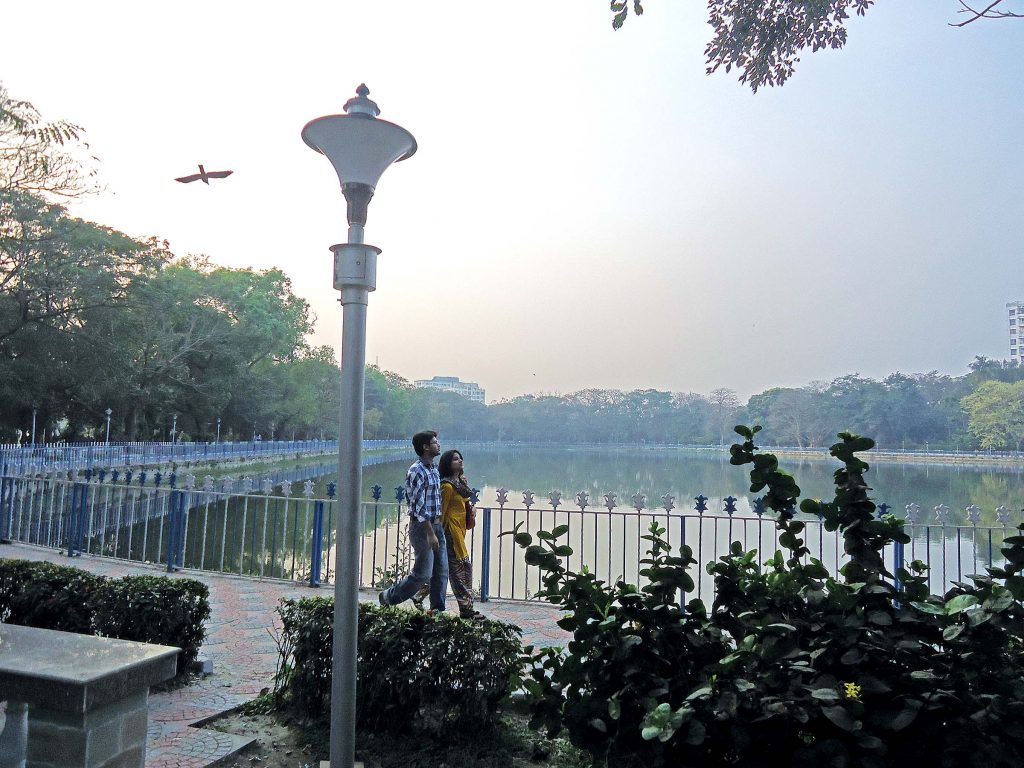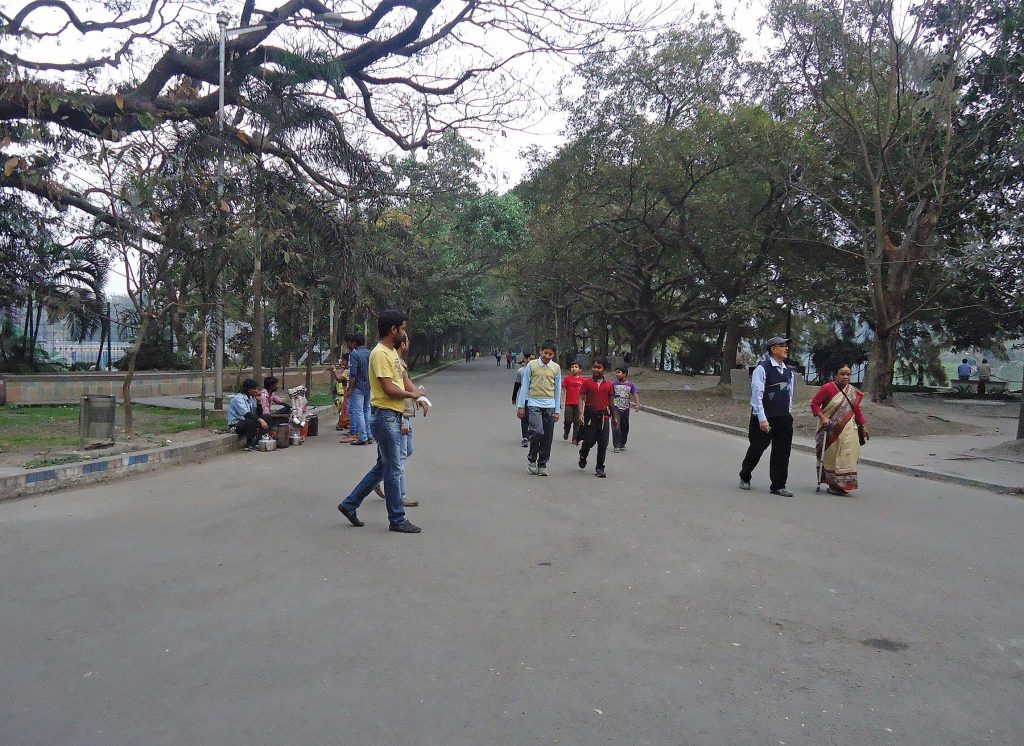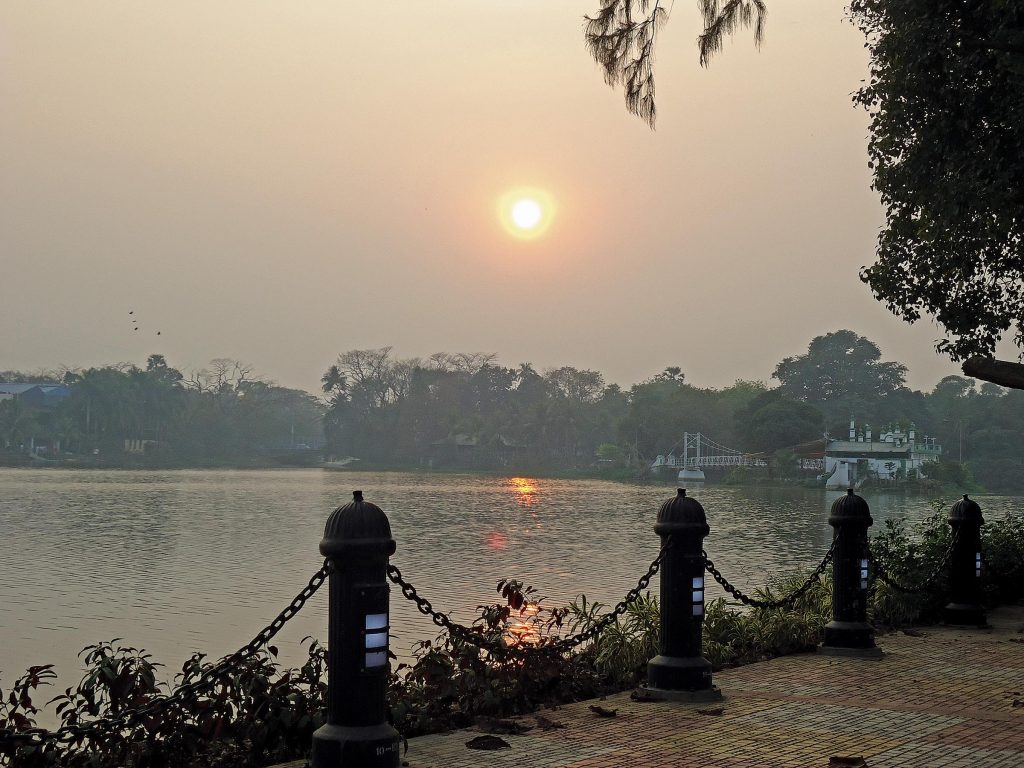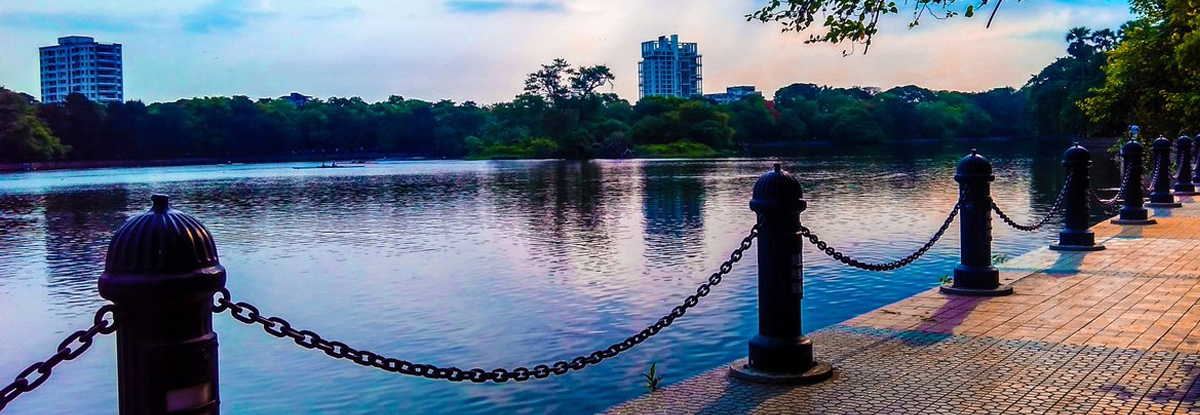Rabindra Sarovar

Rabindra Sarovar Lakes or the Dhakuria Lakes, as the water-bodies were known earlier, are the lungs of Kolkata. You can escape there from the commotion of the city and be with yourself. In the early 1920s, the Calcutta Improvement Trust, a body responsible for developmental work in the Kolkata metropolitan area, acquired about 192 acres of marshy jungles. Its intention was to develop the vicinity for residential use ‒ improving the roads, raising and levelling some of the adjacent land and building lakes and parks. Excavation work was undertaken and the neighbourhood around this excavated lake was later developed to build recreational complexes, which included children’s parks, gardens and an excellent auditorium.

The Dhakuria Lakes were accorded the status of a national lake in 2003 after environmentalists shouted themselves hoarse against the abject bio-degradation that was taking place at the green refuge.

Some of the landmarks in this area are a football stadium, known as the Rabindra Sarovar Stadium, with a seating capacity of approximately 26,000 people. It was established in the 1950s and is today, the cityʼs first stadium to be fully equipped with audio-visual training facilities. The Japanese Buddhist temple in Kolkata is located on the southern fringe of the Sarovar. It was established in 1935 by NichidatsuFujii, founder of the worldwide Buddhist association, the Nipponzan Myohoji. Monks offer prayers in Japanese, to the sound of beating drums, in the early morning hours and at dusk. There are no restrictions on entry to the main temple even when prayers are in progress. Outside the main templebuilding there is a pillar, with a message of peace engraved in Japanese, and a pair of lions that symbolise the guardians of the faith. There is a mosque on one of the lakeʼs islands, which predates the excavation of the lake itself. This island is connected to the southern shore by a suspension bridge, which was built in 1926 and renovated in 1962. The fish sanctuary under this bridge is an additional attraction. A number of rowing and swimming clubs are situated within the Rabindra Sarovar complex.

In 1858, the British founded the Calcutta Rowing Club, presently one of the oldest clubs in India, to promote rowing activities in Kolkata. The current government has taken on a mammoth task of beautifying this area.

